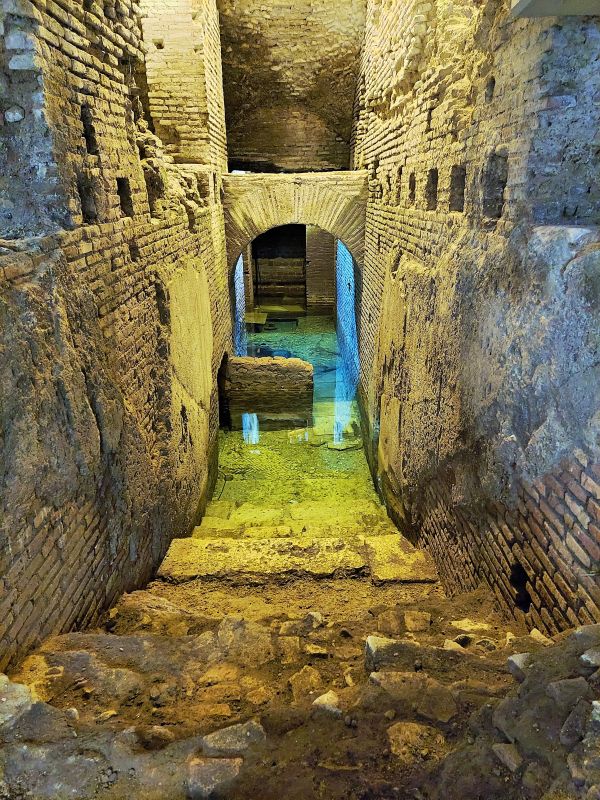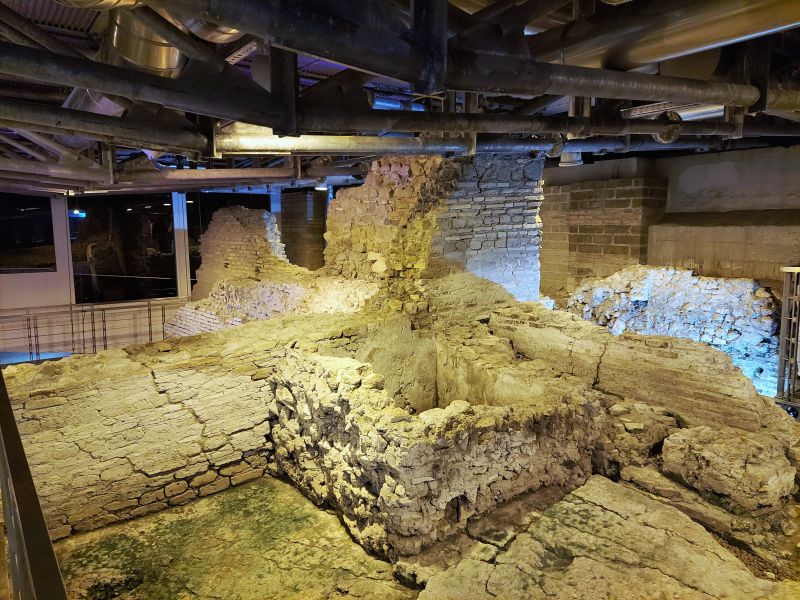History and Location
Vicus Caprarius is known as the „City of Water”. It was discovered relatively recently, in 1999, during construction work as part of the renovation of the Trevi cinema. Archaeologists came across well-preserved remains of ancient buildings and water channels. The deepest layers contain the ruins of insulae (residential buildings) dating back to the time of Nero. They are followed by domus (wealthier villas). Soon after, a water reservoir was created here to serve the adjacent Aqua Virgo aqueduct.
The aqueduct, built in 19 BCE during the reign of Octavian Augustus, was a monumental water supply system and a crucial element of Rome’s infrastructure. Aqua Virgo, also known as Aqua Vergine, brought clean, drinkable water from the surrounding mountains all the way to the city center. The water from the aqueduct still supplies the nearby Trevi Fountain, where it terminates its course.
A collection of amphorae, coins, and fragments of decorative architecture is also on display in this archeological area.
Exploring Vicus Caprarius
The archaeological area was opened to the public in 2004. It is located very close to the Trevi Fountain, at Vicolo del Puttarello 25. The entrance is well marked. Tickets can be reserved online, but it is not mandatory. Despite its location in a popular district of Rome, entry is relatively smooth. At the entrance, there is a lady with a tablet who informs interested visitors about the next available entry time. Entries are practically available every moment.
The ticket is relatively inexpensive, costing 4 euros. Audio guides are also available for rent. Plan to spend about 40 minutes exploring. Currently, the opening hours are from 11 am to 5 pm, from Tuesday to Sunday (closed on Mondays). There is also the possibility of guided tours in groups (in Italian or English). The cost of such a tour is 8 euros. To reserve entry for a specific time or check the current opening hours, it is worth visiting the official Vicus Caprarius website. Restroom facilities are also available on-site.
If you are planning a trip to Rome, I encourage you to also explore other articles about attractions in the Eternal City such as Case Romane on the Celio hill or the Museum Foma Urbis.


